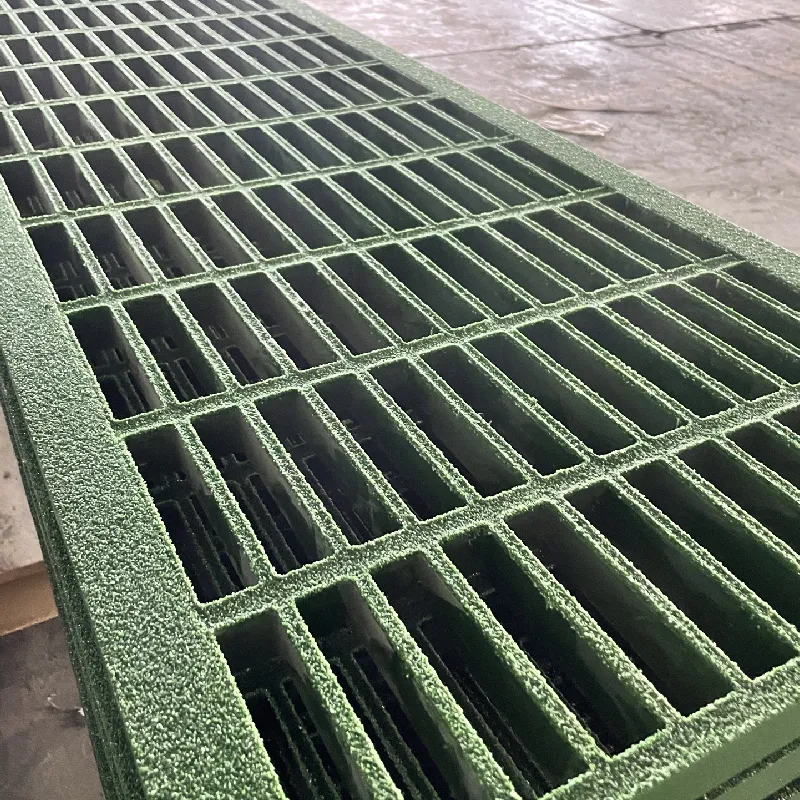loading...
- No. 9, Xingyuan South Street, Dongwaihuan Road, Zaoqiang County, Hengshui, Hebei, China
- admin@zjcomposites.com
- +86 15097380338
- Welcome to visit our website!
Exploring the Benefits and Applications of FRP Louvers in Modern Architecture
Understanding FRP Louvers An Overview
Fiberglass Reinforced Plastic (FRP) louvers are an innovative solution widely used in various industries for ventilation, air control, and aesthetic purposes. Their unique composition and designed structure make them an attractive option for both commercial and industrial applications. This article will explore the characteristics, benefits, and applications of FRP louvers to help you understand why they are increasingly becoming a popular choice among architects and engineers.
What Are FRP Louvers?
FRP louvers are ventilation devices made from a composite material that combines fiberglass and plastic. This combination provides exceptional strength while remaining lightweight, making them ideal for environments where traditional materials may falter. The use of fiberglass enhances the structural integrity, allowing FRP louvers to withstand harsh weather conditions, corrosion, and UV radiation.
Key Benefits of FRP Louvers
1. Durability One of the main advantages of FRP louvers is their durability. Unlike metal or wood, which may rust or rot over time, FRP is highly resistant to water, chemicals, and extreme temperatures. This longevity reduces maintenance costs and the need for frequent replacements.
2. Corrosion Resistance FRP materials are inherently resistant to corrosion. This quality makes them suitable for industries such as chemical processing, marine environments, and wastewater treatment facilities where exposure to harsh chemicals is common.
3. Aesthetic Flexibility FRP louvers are available in various colors and designs. They can be customized to fit the architectural style of a building, adding to the aesthetic appeal while maintaining functionality. This versatility makes them a popular choice for both new constructions and renovation projects.
frp louver

4. Thermal Insulation Fiberglass has excellent insulating properties, which can help in maintaining indoor temperatures. This feature is particularly beneficial in climates that experience extreme temperatures, enhancing energy efficiency in buildings.
5. Lightweight Nature The lightweight characteristic of FRP louvers makes installation easier and less labor-intensive compared to heavier materials. This can lead to reduced installation costs and time.
Applications of FRP Louvers
FRP louvers are used in a variety of applications across different sectors. They are commonly found in
- Industrial Facilities FRP louvers are ideal for factories and plants requiring ventilation systems to manage airflow and reduce pollutants. - Commercial Buildings In malls, office buildings, and hospitals, FRP louvers can provide both functional ventilation and design versatility. - Power Plants The durability and corrosion resistance of FRP louvers make them a reliable choice for use in power generation facilities. - Transportation Systems They can also be utilized in ventilation systems for tunnels and subways, where weight and corrosion resistance are critical.
Conclusion
In summary, FRP louvers present an effective solution for various ventilation needs while offering numerous advantages such as durability, corrosion resistance, and aesthetic flexibility. Their applications across different industries underscore their versatility and reliability. As building codes and environmental considerations become increasingly stringent, the demand for efficient and sustainable solutions like FRP louvers will continue to grow. Whether you are working on a new construction project or renovating an existing structure, considering FRP louvers could be a wise decision for enhancing both performance and design.
-
Transform Your Spaces with FRP Grating SolutionsNewsNov.04,2024
-
The Versatility and Strength of FRP RodsNewsNov.04,2024
-
The Excellence of Fiberglass Water TanksNewsNov.04,2024
-
The Benefits of FRP Grating for Your ProjectsNewsNov.04,2024
-
Elevate Your Efficiency with FRP Pressure VesselsNewsNov.04,2024
-
Welcome to the World of FRP Pressure VesselsNewsOct.12,2024
-
Unveiling the Future of Filtration: Why FRP Filter Vessels are a Game ChangerNewsOct.12,2024
